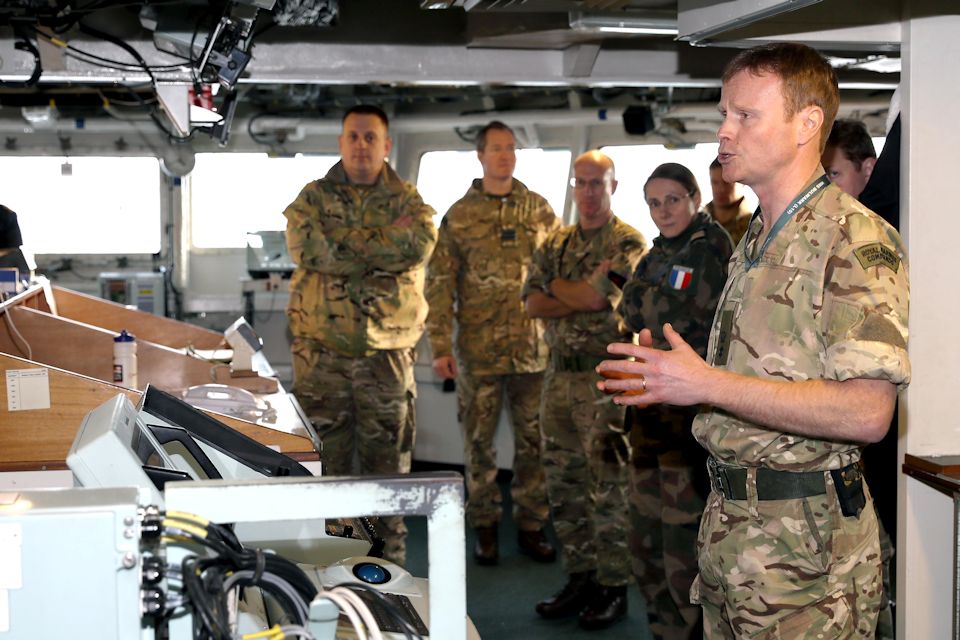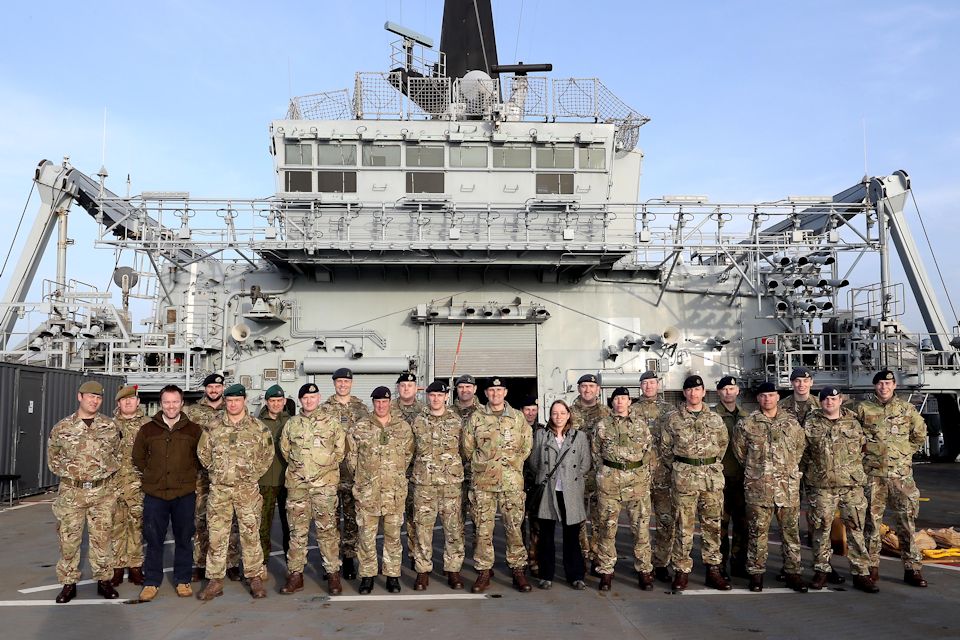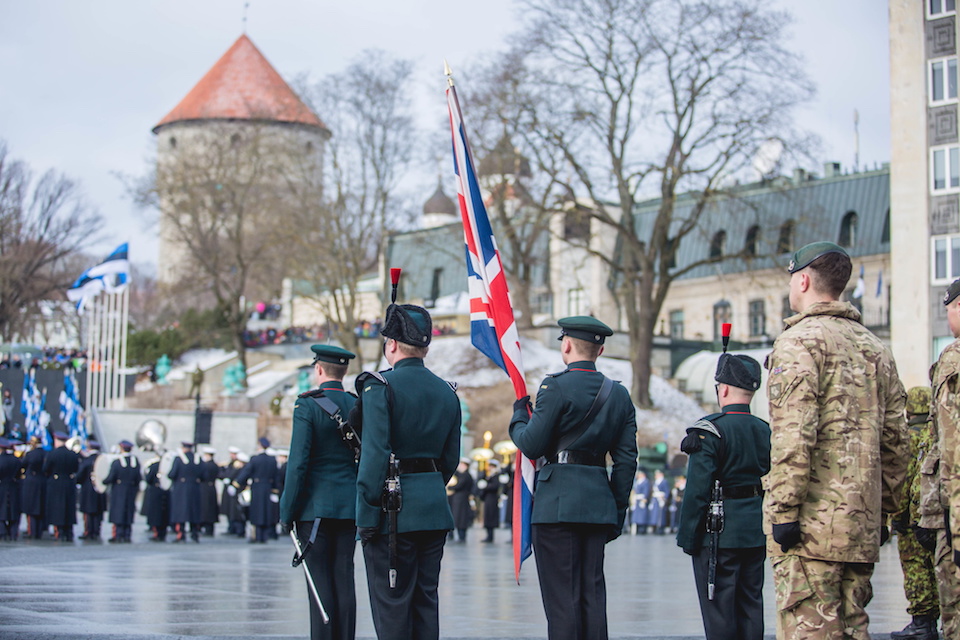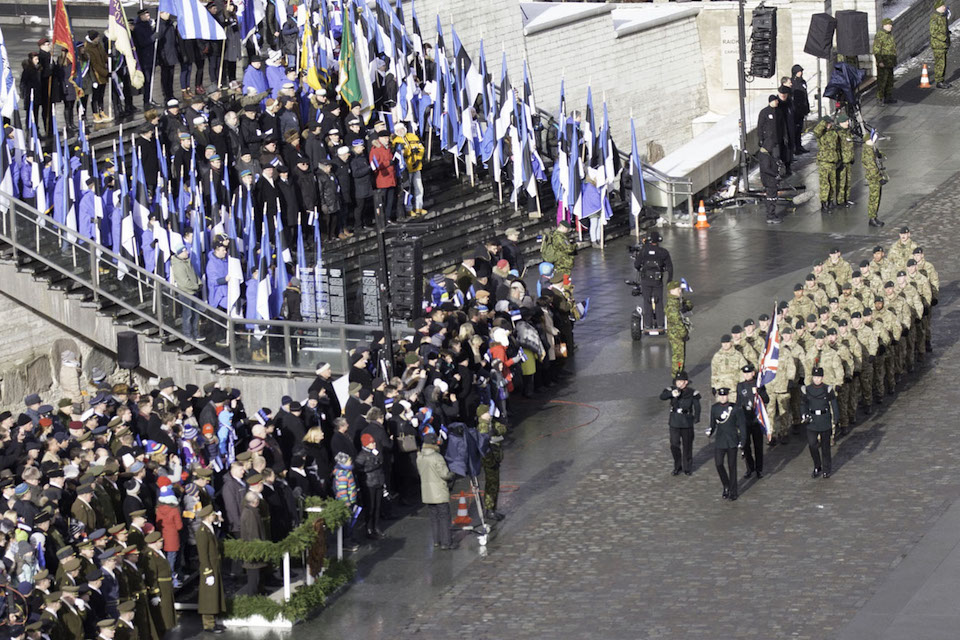News story: SJFHQ undertake valuable maritime familiarisation visit to HMNB Devonport
Standing Joint Force Headquarters (SJFHQ) was established under the last Strategic Defence and Security Review and is a new deployable, operational 2* Joint Headquarters intended to command Joint forces in response to a crises or contingency worldwide.
SJFHQ personnel come from all 3 services and the purpose of the visit to HMNB Devonport was to widen the experience of SJFHQ staff from the British Army and the Royal Air Force in particular, so they can better appreciate the significant contribution the navy can play in any future operations. This will help them to plan more effectively and understand how the Royal Navy can best be utilised in SJFHQ led Joint operations.
Lt Col James Fuller, RM, briefs SJFHQ personnel on the capabilities of HMS Bulwark. Crown Copyright/MOD 2017. All rights reserved
The team spent 2 days at HMNB Devonport, where they received briefs on a range of topics, from amphibious operations to naval logistics and the new Type 26 Global Combat Ship. They toured the assault ship HMS Bulwark and travelled in Offshore Raiding Craft for a coxswain demonstration from 1 Assault Group Royal Marines. After a briefing from the Navy’s Flag Officer Sea Training (FOST) team, the SJFHQ team then split into groups to visit 2 vessels currently undergoing FOST training and assessments. The first group travelled to HMS Duncan and watched her crew on an air assault exercise, while the second watched a damage control exercise on Norwegian frigate HNOMS Otto Sverdrup.
SJFHQ personnel ready to experience a ride on Offshore Raiding Craft, courtesy of 1 Assault Group Royal Marines.Crown Copyright/MOD 2017. All rights reserved
Lt Col Nick Morton RA, SJFHQ, said:
As a Joint Headquarters, it’s essential that we all have a good understanding of the capabilities and specialisms of each of the 3 branches of the armed forces, not just our own. Visiting Devonport has really helped me to develop and embed my knowledge of the Royal Navy and the reality of how it operates.
SJFHQ also has embedded staff officers from the UK’s partner nations in the Joint Expeditionary Force (JEF), the Netherlands, Denmark, Norway, Latvia, Lithuania and Estonia, and the Anglo-French Combined Joint Expeditionary Force, several of whom took part in the visit. The visit to HNOMS Otto Sverdrup therefore also provided an opportunity to see a JEF partner nation in action.
Captain Peter Olive RN, Assistant Chief of Staff (Operate Branch), SJFHQ said:
Our visit was enormously valuable to the team, especially those from the army and RAF. It has really brought the Royal Navy to life for the staff and helped them to understand more about the limitations and difficulties of maritime operations, as well as the enormous benefits maritime power can provide to any future deployments.
Everyone here at HMNB Devonport and on HMS Bulwark, HMS Duncan and HNOMS Otto Sverdrup has been extremely helpful and accommodating, so thank you to them.
The visit followed an earlier familiarisation visit to the Army’s Land Warfare Centre and plans are underway for a similar event with the RAF.



